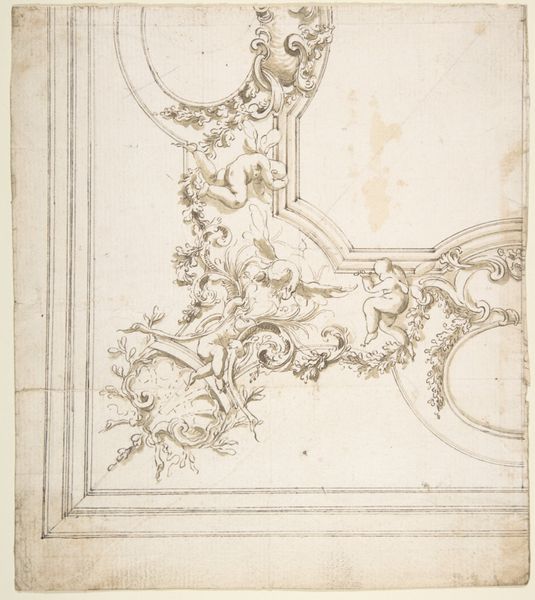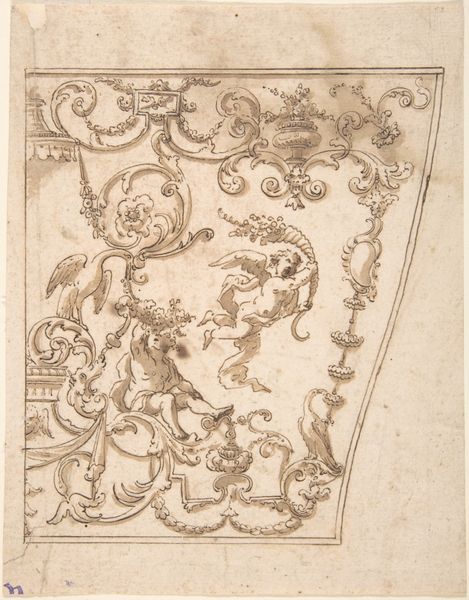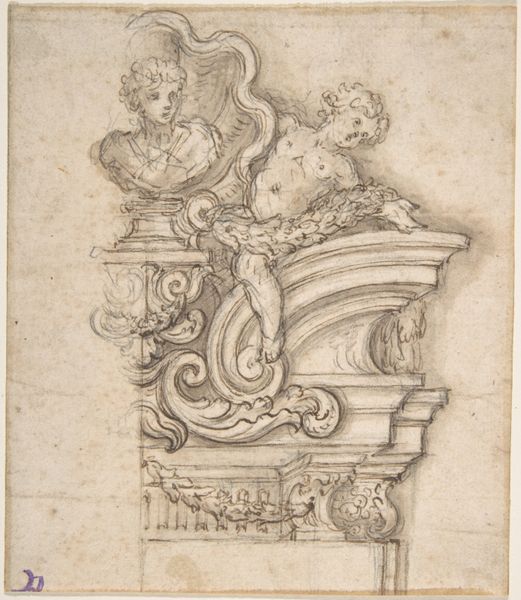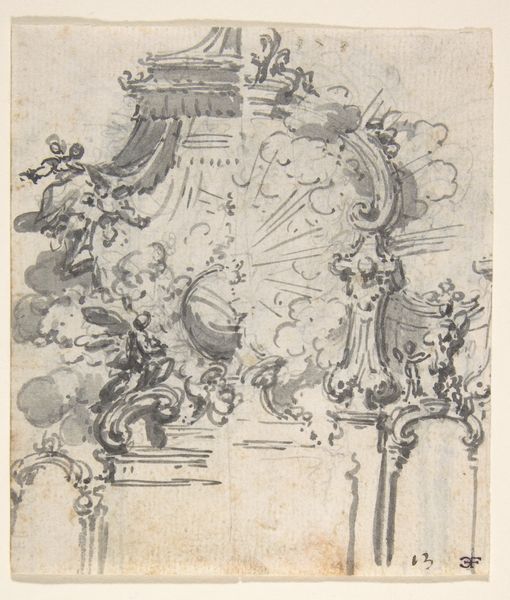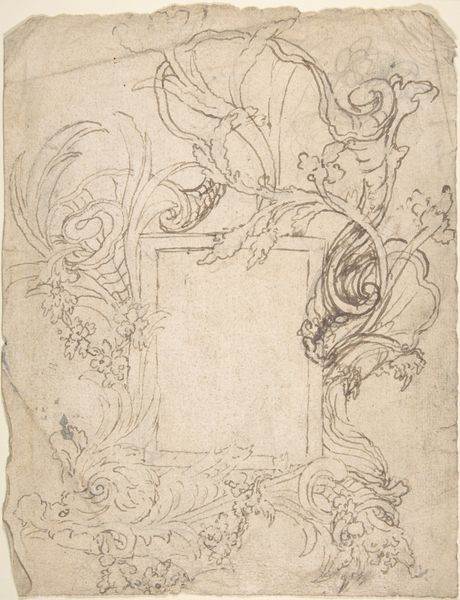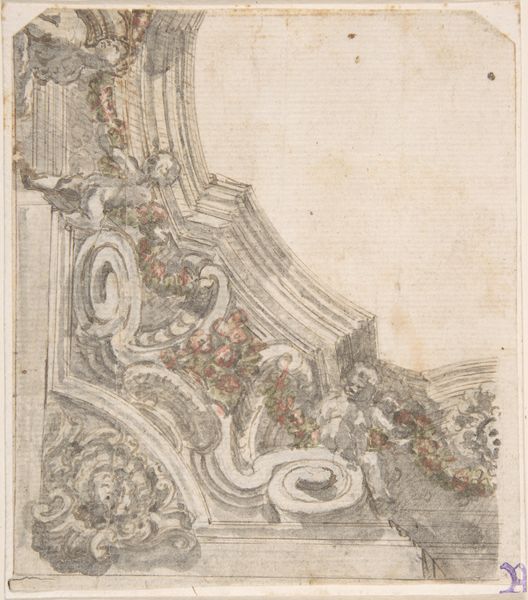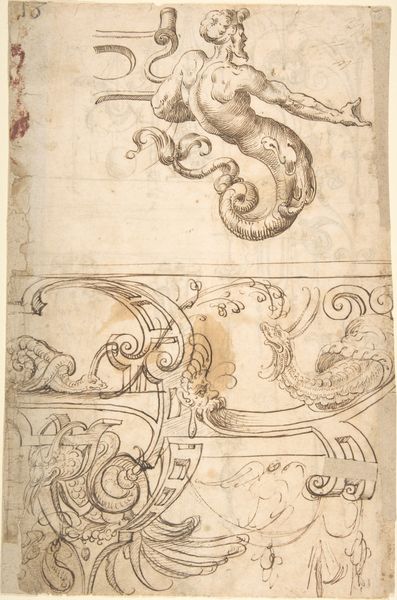
drawing, print, ink
#
drawing
#
allegory
#
baroque
# print
#
etching
#
ink
#
pen-ink sketch
#
decorative-art
Dimensions: 7-5/8 x 6-1/2 in. (19.4 x 16.5 cm)
Copyright: Public Domain
Curator: This work, titled "Ceiling Decoration," dates to around 1600-1700 and resides here at the Metropolitan Museum. It’s rendered in pen and ink. An etching, to be precise. Editor: My initial reaction is one of lightheartedness. It has a buoyant, airy feel to it, perhaps from the putti seemingly suspended in the architectural space. It also strikes me as quite academic; a preparatory sketch done to guide the production of plasterwork for elaborate rooms. Curator: Precisely! Note the way the ink washes create depth and shadow, mimicking the play of light on sculpted surfaces. It’s not merely representational; it's actively engaging with the intended materiality. The labor behind producing architectural ornamentation, often overlooked, is central to understanding this kind of decorative art. The transition of these design sketches into physical labor with various crafts creates architecture for wealthy patrons, who consumes them. Editor: Absolutely. These putti, these chubby, winged infants, are loaded symbols in Western art history. They represent innocence, divine love, and even the souls of the deceased in some contexts. Their presence signals a desire to imbue the space with a sense of heavenly harmony or idealized love. The baroque architectural decorations—cartouches and volutes—carry meanings of grandeur and refined power, adopted from Roman art to suggest imperial connections. Curator: See, though, the medium is very crucial here. Printmaking allowed designs to be replicated and disseminated widely. Think of these prints not only as aids in plasterwork designs, but as currency within artistic and workshop networks of the era. Knowledge gets replicated to build grand statements. Editor: An intriguing point about knowledge and its circulation! It reminds me that even seemingly innocent figures can hold multiple, even contradictory meanings. The etching method helps them propagate cultural ideas. These angelic figures, originally borrowed from classical pagan art, serve the purpose of Christianity. In fact, it brings to mind how artists in the Baroque period consistently worked within very politically fraught religious conflicts! Curator: Exactly, seeing this design as the nexus of multiple crafts gives rise to these new meanings as it interacts within its unique social and production context. It brings me joy when design enters and reshapes these material crafts in their own specific spaces. Editor: It’s fascinating how you center production while I’m looking to unravel layered stories and emotions evoked by these carefully chosen visual codes! Each angle brings something compelling. Curator: It really shows how material practice, such as sketches, shape symbolic interpretation. Thank you! Editor: Indeed, and seeing the echoes of these symbols throughout art history only deepens our appreciation. It’s been insightful!
Comments
No comments
Be the first to comment and join the conversation on the ultimate creative platform.
